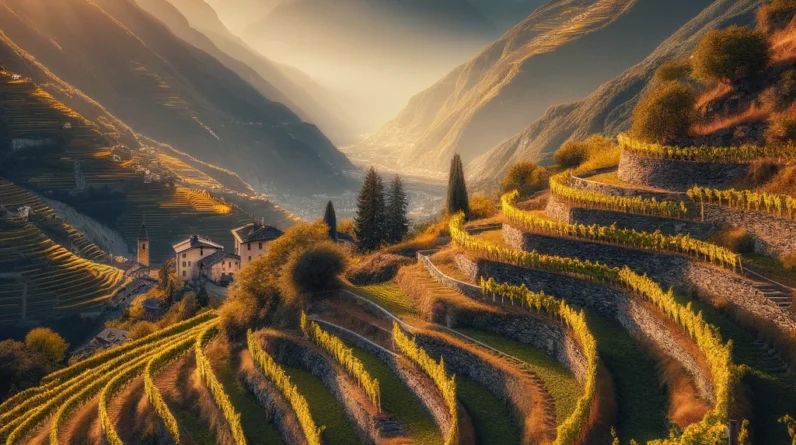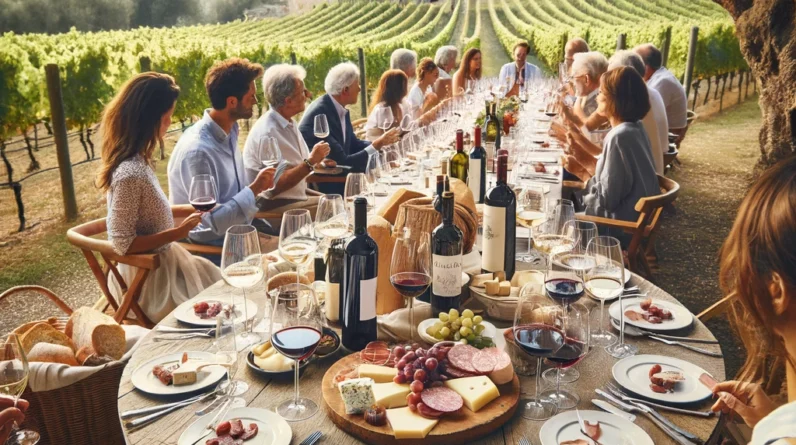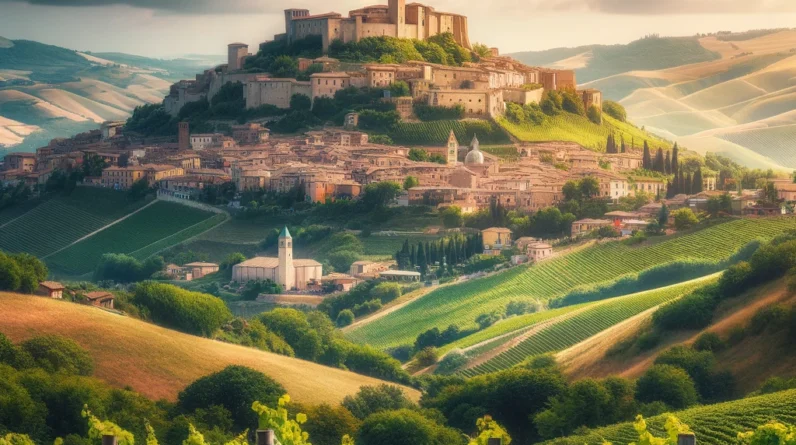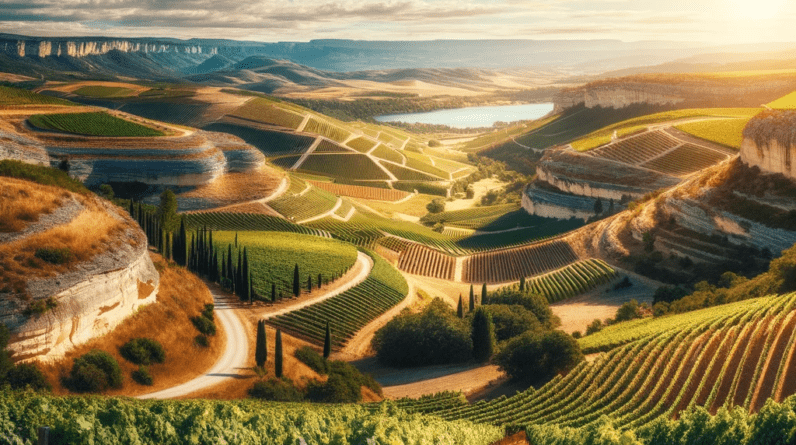
The Wines and Vineyards of Côtes de Castillon: A Comprehensive Guide
Nestled on the right bank of the Dordogne River in the world-renowned Bordeaux wine region, Côtes de Castillon emerges as a hidden gem, waiting to be discovered by those who seek the
essence of French winemaking.
This region, often overshadowed by its more famous neighbors, holds a treasure trove of vinous delights, offering a unique blend of history, culture, and exceptional wines.
In this comprehensive guide, we delve deep into the heart of Côtes de Castillon, exploring everything from the luscious wines it produces to the storied vineyards that dot its landscape.
As we journey through this enchanting region, we uncover the secrets of its terroir, the passion behind its winemaking, and the rich tapestry of history that makes Côtes de Castillon a must-visit
destination for wine lovers around the world.
Whether you’re a connoisseur looking to expand your wine horizons, a traveler eager for new experiences, or simply a lover of good wine, this guide will offer valuable insights into the wines and
vineyards of Côtes de Castillon, showcasing why this region deserves a prominent place on your wine map.
Let’s embark on this vinous adventure and discover the charm and elegance of Côtes de Castillon’s wines.
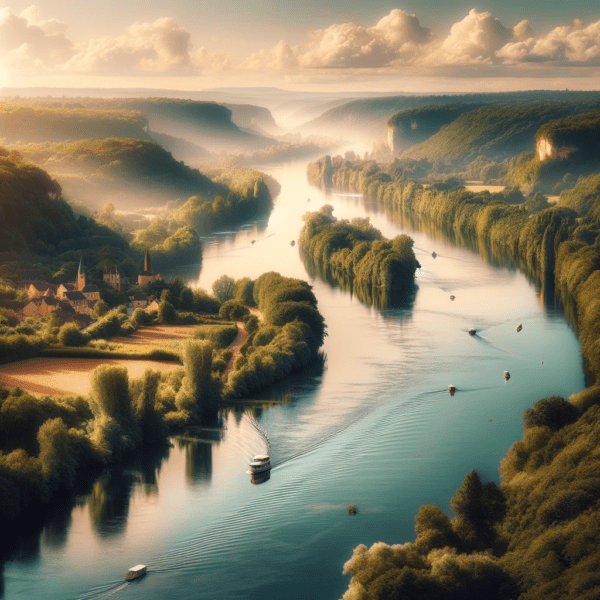
General Overview of Côtes de Castillon
Cultural and Historical Context
The winemaking tradition in Côtes de Castillon is steeped in history.
The region’s vineyards have been cultivated for centuries, with each generation passing down its knowledge and passion.
This historical depth adds a rich cultural dimension to the wines, making them not just beverages but storytellers of the land’s heritage.
Overview of Wines Produced
In the heart of Bordeaux’s right bank lies Côtes de Castillon, a haven for wine enthusiasts.
This region is renowned for its red wines, predominantly crafted from Merlot, Cabernet Franc, and Cabernet Sauvignon.
These wines are celebrated for their rich, full-bodied nature, often exuding flavors of ripe red fruits, plums, and subtle earthy undertones.
The winemakers here balance tradition with innovation, leading to wines that are both authentic and modern.
Terroir
The Côtes de Castillon wine region, part of the larger Bordeaux area in France, is renowned for its distinctive terroir.
This region benefits from a unique combination of geological and climatic factors that contribute significantly to the character of its wines.
Grapes
Côtes de Castillon is predominantly known for red wine production.
The key grape varieties include:
Merlot: The most planted grape in the region, Merlot contributes to the roundness and fruitiness of the wines.
Cabernet Franc: Often used in blends with Merlot, adding freshness and complexity.
Cabernet Sauvignon: Used less frequently but valued for adding structure and aging potential.
Other varieties like Malbec, Petit Verdot, and Carmenere are also used, though to a lesser extent.
| Grape Variety | Flavor Profile | Used in Côtes de Castillon For | Red/White Grape |
|---|---|---|---|
| Merlot
| Flavors of plum, black cherry, and herbal notes. Soft tannins and medium acidity. | Dominant grape for red wines, contributing to the full-bodied and fruity profile of the wines. | Red |
| Cabernet Franc
| Notes of strawberry, red plum, bell pepper, and a hint of spiciness. Lighter tannins and good acidity. | Often blended with Merlot to add complexity and freshness to the wines. | Red |
| Cabernet Sauvignon
| Blackcurrant, black cherry, and cedar, with more pronounced tannins and structure. | Used less frequently, but adds structure and aging potential to blends. | Red |
| Malbec
| Dark fruit flavors like blackberry and plum, often with a spicy or earthy edge. | Occasionally used in blends to add color and tannic strength. | Red |
| Petit Verdot
| Offers flavors of blueberry, violet, and earthy notes, with high tannins and acidity. | Used in small quantities to add color and intensity to the wine blends. | Red |
| Carmenere
| Characteristics of spicy red fruits, sometimes green pepper notes, with medium tannins. | Rarely used, but can contribute unique spicy notes to the blends. | Red |
Soils
The soil composition in Côtes de Castillon is diverse, with a significant presence of limestone and clay.
This variation in soil types is a critical factor in the region’s wine production.
Limestone: Found mainly on the plateau, limestone soils contribute to the elegance and minerality in the wines.
Clay: Provides the necessary moisture retention and contributes to the richness and body of the wines.
Gravel and Sand: Present in some areas, these soils can impact the drainage and heat retention, influencing the grape ripening process.
Climate
The climate in Côtes de Castillon is characterized by warm summers and mild winters, typical of the Bordeaux region.
This climate is conducive to the ripening of grapes, ensuring a balance of sugar, acidity, and tannins.
The region’s location also allows for a slightly cooler microclimate compared to other parts of Bordeaux, which can result in a longer growing season and more nuanced flavor development in the
grapes.
Côtes de Castillon offers a unique expression of Bordeaux’s winemaking heritage.
Its combination of varied soils, a mix of traditional and modern grape varieties, and a conducive climate creates a terroir that is expressed vividly in its wines.
This region is a testament to the diversity and richness of the Bordeaux wine landscape, offering wine enthusiasts an intriguing array of flavors and styles.
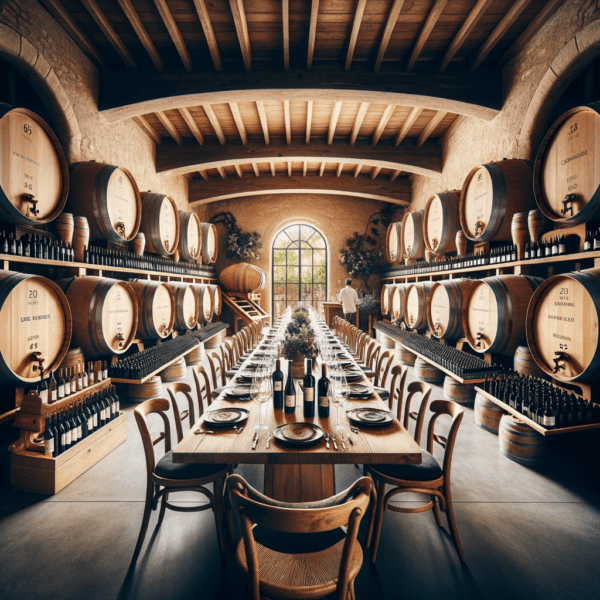
Notable Vineyards and Estates
Côtes de Castillon boasts several esteemed vineyards and estates.
Château de Pitray and Château Montlandrie are among the jewels in the crown, known for their exceptional wines and picturesque landscapes.
These estates have centuries of winemaking heritage, offering not just wine but a piece of history in each bottle.
| Vineyard | Notable Aspects |
|---|---|
| Château Alcée
| Notable vineyard in the region |
| Clos L’Eglise
| Prominent vineyard |
| Clos Lunelles
| Key vineyard |
| Château d’Aiguilhe
| Owned by Stephan von Neipperg |
| Château d’Aiguilhe Querre
| Recognized vineyard |
| Domaine de l’A
| Biodynamic farming, quality wines |
| Château Cap de Faugeres
| Recognized in the region |
| Clos Puy Arnaud
| Managed by Thierry Valette |
| Cote Montpezat
| Significant vineyard in the region |
| Château Joanin Becot
| Launched by Gérard Bécot and Juliette |
| l’Aurage
| Known for quality |
| Château Montlandrie
| Produces red wines |
| Château Roncheraie
| Prominent vineyard |
Uniqueness of Côtes de Castillon
Côtes de Castillon wines hold a special place in the Bordeaux wine landscape due to several distinct features.
Unique Terroir and Microclimate
Côtes de Castillon boasts a unique terroir with a mix of limestone and clay soils, which contribute to the distinct flavor profiles of its wines.
The region benefits from a slightly cooler microclimate compared to other Bordeaux areas, allowing for a longer growing season and nuanced flavor development in the grapes.
Dominance of Merlot
The region is predominantly known for red wines made primarily from Merlot, which is well-suited to the local terroir.
This results in wines that are often rich, full-bodied, and fruit-forward, with a balance of soft tannins and medium acidity.
Quality and Value
Côtes de Castillon wines are often praised for their excellent quality-to-price ratio.
They offer a high-quality Bordeaux experience often at more accessible price points compared to the more renowned appellations in the region.
Aging Potential
Many wines from Côtes de Castillon exhibit good aging potential, especially those with blends that include Cabernet Sauvignon.
Over time, these wines can develop added complexity and depth.
Sustainable Viticulture
There is a growing trend towards sustainable, organic, and biodynamic practices in the vineyards of Côtes de Castillon.
This commitment to environmental stewardship is becoming increasingly important in the region’s viticulture.
Historical and Cultural Significance
The region’s rich history, part of the broader cultural landscape of Bordeaux, adds to the charm and appeal of its wines.
Emerging Recognition
While historically overshadowed by more famous neighbors, Côtes de Castillon is gaining recognition for its distinct wines, attracting investment and interest from renowned wine producers and
enthusiasts.
In summary, Côtes de Castillon wines are special due to their unique combination of terroir, predominant use of Merlot, excellent value, aging potential, commitment to sustainable practices, and
their emerging status as a region producing high-quality Bordeaux wines.

Winemaking techniques in Côtes de Castillon
Winemaking techniques in Côtes de Castillon reflect a blend of traditional and modern practices, contributing to the distinctive quality of its wines.
Harvesting
Grapes are typically harvested manually, allowing for careful selection of the best fruit.
In some vineyards, mechanical harvesting is also employed, particularly where it’s practical and efficient.
Fermentation
The fermentation process often takes place in stainless steel vats, which allow for better temperature control.
Traditional oak vats are also used in some wineries, adding complexity and depth to the wine.
Maceration
Extended maceration is common, where the skins are left in contact with the juice for a longer period.
This technique enhances color extraction and contributes to the tannic structure of the wines.
Aging
Aging in oak barrels is a significant aspect of the winemaking process in Côtes de Castillon.
The use of oak (both new and old barrels) imparts complexity, adds tannic structure, and allows for the gradual development of secondary and tertiary flavors in the wine.
Blending
As with many Bordeaux wines, blending is a critical step in Côtes de Castillon.
Winemakers skillfully blend different grape varieties, primarily Merlot with Cabernet Franc and Cabernet Sauvignon, to achieve a balance of flavors, aromas, and textures.
Micro-oxygenation
Some winemakers use micro-oxygenation, a technique that involves introducing small amounts of oxygen during fermentation or aging.
This can soften tannins and stabilize color.
Green Harvesting and Leaf Plucking
These vineyard management techniques are used to ensure better sun exposure and airflow around the grape clusters, leading to more even ripening and higher quality fruit.
Sustainable Practices
There is an increasing focus on sustainable, organic, or biodynamic practices, with many vineyards adopting environmentally friendly methods in both the vineyard and the winery.
The winemaking techniques in Côtes de Castillon are continually evolving, with winemakers experimenting and adapting to best express the unique terroir of the region.
The combination of these techniques results in wines that are not only expressive of their origin but also cater to a wide range of wine enthusiasts’ palates.

Foods of Côtes de Castillon
The Côtes de Castillon region, with its rich winemaking tradition, is also known for its delightful culinary offerings.
The local cuisine features dishes that pair wonderfully with the region’s robust and nuanced wines.
Here are some special dishes from the area, perfect for complementing Côtes de Castillon wines.
Confit de Canard (Duck Confit)
A classic French dish where duck is slowly cooked in its own fat, resulting in tender, flavorful meat.
This rich dish pairs beautifully with the full-bodied red wines of Côtes de Castillon, particularly those with a good tannic structure.
Entrecôte à la Bordelaise (Rib Steak with Bordeaux Sauce)
This steak dish, served with a rich red wine sauce made with shallots, butter, and herbs, is a perfect match for the Merlot-dominated wines of the region, complementing the meat’s richness and
the sauce’s depth.
Lamproie à la Bordelaise (Lamprey Bordeaux Style)
A unique local delicacy, lamprey is cooked in red wine with leeks and spices.
The complexity of this dish harmonizes well with the layered flavors of Côtes de Castillon wines.
Cèpes de Bordeaux (Bordeaux Mushrooms)
These wild mushrooms, often prepared sautéed or in stews, offer an earthy flavor that pairs well with the fruit-forward and slightly earthy notes of the region’s wines.
Truffles of Périgord
Highly prized, these truffles add an exquisite touch to simple dishes like omelets or risottos.
Their earthy, rich flavor complements the elegant, minerally red wines of Côtes de Castillon.
Caneles de Bordeaux
A famous dessert from the Bordeaux region, these small, caramelized pastries have a soft custard center.
They can be a delightful contrast to the more robust wines of Côtes de Castillon, especially for those who enjoy a sweet-and-savory pairing.
Agneau de Pauillac (Pauillac Lamb)
Renowned for its quality, lamb from Pauillac is often roasted or grilled, creating a succulent dish that pairs exquisitely with the balanced and structured wines of Côtes de Castillon.
Each of these dishes represents the rich culinary heritage of the Côtes de Castillon region and offers a harmonious pairing with its wines, enhancing the flavors and overall dining experience.

Wine Tourism
Côtes de Castillon is a paradise for wine tourists.
Many vineyards offer tours and tastings, providing a glimpse into the art of winemaking.
These experiences often include walking through the vineyards, visiting cellars, and, of course, sampling a range of wines, giving visitors a comprehensive taste of the region’s viticulture.
Visiting the Côtes de Castillon region offers more than just a wine-tasting experience; it’s a journey through a landscape rich in history, culture, and natural beauty.
Here are some special places to see and visit while in the region.
Castillon-la-Bataille
This historic town is known for the Battle of Castillon, which ended the Hundred Years’ War.
The town hosts reenactments of the battle during the summer, offering a vivid glimpse into its history.
Saint-Émilion
A short drive from Côtes de Castillon, Saint-Émilion is a UNESCO World Heritage site.
Famous for its medieval architecture and underground catacombs, it’s a must-visit for its historical significance and exceptional wines.
The Dordogne River
Ideal for leisurely walks or boat trips, the river offers picturesque views and a tranquil setting.
It’s perfect for a day of relaxation and enjoying the natural beauty of the region.
Local Markets
Explore the local markets in the region, such as those in Castillon-la-Bataille or nearby towns.
They are vibrant places to sample local produce, cheeses, and other regional specialties.
Bordeaux
Though technically not in Côtes de Castillon, the city of Bordeaux is a short drive away and is a hub of culture, gastronomy, and, of course, wine.
Its elegant cityscape and rich history make it a worthwhile visit.
Vineyard Tours
Many vineyards in Côtes de Castillon offer tours and tastings.
These tours provide insights into the winemaking process and the region’s viticultural heritage.
Château de Montaigne
This nearby château was the home of the philosopher Michel de Montaigne.
It’s a significant site for those interested in French literature and history.
Hiking and Cycling
The region’s rolling hills and scenic vineyards offer excellent opportunities for hiking and cycling, allowing visitors to immerse themselves in the picturesque landscape.
Libourne
Located near the confluence of the Dordogne and Isle rivers, Libourne is a charming wine trading town with beautiful architecture and a relaxed atmosphere.
Gourmet Dining
The region boasts several excellent restaurants where visitors can enjoy local cuisine paired with exquisite Côtes de Castillon wines.
Each of these destinations offers a unique aspect of the Côtes de Castillon region, from its historical roots to its natural splendor and viticultural richness, providing a well-rounded experience for
any visitor.
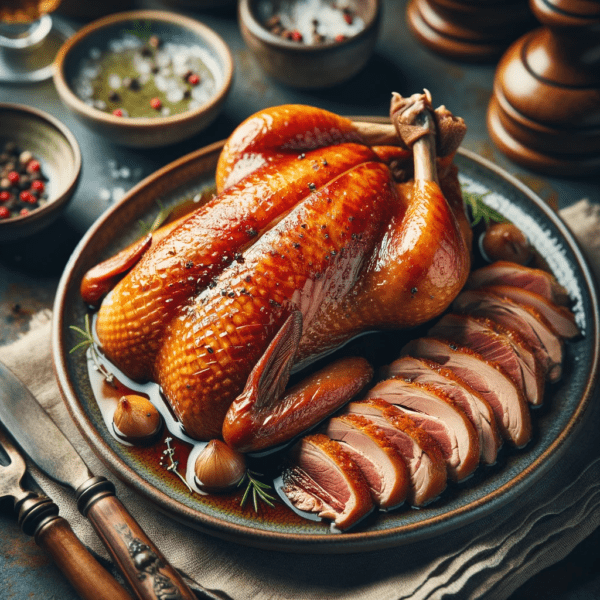
Practical Tips on Visiting Côtes de Castillon
Visiting the Côtes de Castillon region can be a delightful experience, and here are some practical tips to make the most of your trip.
Plan Your Visits to Vineyards
Many vineyards in Côtes de Castillon require appointments for tours and tastings.
It’s best to arrange these in advance, especially during the peak tourist season.
Accommodation
Consider staying in local guesthouses or B&Bs for a more authentic experience.
Saint-Émilion and Bordeaux also offer a range of accommodation options, from luxury hotels to charming inns.
Transportation
Renting a car is the most convenient way to explore the region, as public transport can be limited, especially in rural areas.
This gives you the flexibility to visit vineyards and explore the countryside at your own pace.
Language
While some people in the tourism industry speak English, not everyone does.
Learning a few basic French phrases can be very helpful and is appreciated by locals.
Local Cuisine
Don’t miss out on trying the local dishes, which pair beautifully with the regional wines.
Exploring local markets and restaurants is a great way to experience the culinary delights of the area.
Weather Considerations
Check the weather forecast and dress accordingly.
The region can be warm in summer, so light clothing, sunscreen, and a hat are advisable.
Spring and autumn may require layers.
Wine Purchases
If you plan to buy wine, consider how you’ll transport it home.
Some vineyards offer shipping services, which can be convenient.
Cultural Etiquette
Be respectful of local customs and traditions.
This includes being punctual for wine tastings and appointments.
Explore Beyond Wine
While the region is famous for its vineyards, take time to explore its historical sites, beautiful landscapes, and quaint towns.
Stay Connected
Ensure your mobile phone works in France, or consider getting a local SIM card for ease of navigation and communication.
Budget Accordingly
While there are options for every budget, be mindful of your spending, especially if you plan to visit multiple vineyards or dine out frequently.
Travel Insurance
It’s always a good idea to have travel insurance, just in case of unexpected events or emergencies.
Respect the Environment
The region is known for its natural beauty and efforts in sustainable viticulture.
Be mindful of your environmental impact while visiting.
By keeping these tips in mind, you can ensure a pleasant and fulfilling visit to the Côtes de Castillon region, enjoying the best of what it has to offer in terms of wine, food, culture, and natural
beauty.
Wine Buying and Availability
Côtes de Castillon wines are accessible both locally and internationally.
They can be found in various wine shops and online platforms.
For those seeking to purchase these wines, it’s worth exploring local wine merchants or online retailers specializing in Bordeaux wines.
The region’s wines offer great value, making them an excellent choice for both casual drinkers and serious collectors.
The best vintages of Côtes de Castillon wines, as noted by experts in the field, include the years 2022, 2021, 2020, 2019, 2018, 2017, 2016, 2015, 2014, 2012, 2010, 2009, 2008, 2005, 2001, and
2000.
These years are particularly notable for their quality and are representative of the region’s ability to produce exceptional wines across different climatic conditions.
When choosing a Côtes de Castillon wine, these vintages can be a reliable guide for selecting bottles with a potential for both immediate enjoyment and aging.
In conclusion, Côtes de Castillon is a region that offers a delightful journey for the senses.
Its wines, rich in flavor and history, are a testament to the art of French winemaking.
Whether you’re a seasoned connoisseur or a curious beginner, the wines and vineyards of Côtes de Castillon promise an experience that is both enriching and unforgettable.
FAQs:
Q: What is unique about the Côtes de Castillon wine region?
A: Côtes de Castillon, located in Bordeaux’s right bank, is unique for its diverse terroir with limestone and clay soils, and a slightly cooler microclimate.
This region is known for producing full-bodied, rich red wines primarily from Merlot, Cabernet Franc, and Cabernet Sauvignon.
Q: What types of wines are Côtes de Castillon known for?
A: The region is predominantly known for its red wines, characterized by their richness, depth, and balanced fruit flavors.
Merlot is the most widely used grape, often blended with Cabernet Franc and Cabernet Sauvignon.
Q: Are there any notable vineyards or estates in Côtes de Castillon?
A: Yes, notable vineyards include Château Alcée, Clos L’Eglise, Clos Lunelles, Château d’Aiguilhe, and Château Montlandrie, among others.
These vineyards are recognized for their quality wines and unique contributions to the region’s viticulture.
Q: Can visitors tour vineyards in Côtes de Castillon?
A: Many vineyards in Côtes de Castillon offer tours and tastings.
These experiences often include vineyard walks, cellar visits, and wine tastings, providing insight into the region’s winemaking practices.
Q: How does the climate in Côtes de Castillon affect its wines?
A: The region’s warm summers and mild winters are ideal for grape growing, ensuring balanced ripening.
The cooler microclimate allows for a longer growing season, which can lead to more nuanced flavor development in the grapes.
Q: What makes the terroir of Côtes de Castillon special?
A: The region’s terroir is marked by limestone and clay soils, which contribute to the minerality and body of its wines.
The varied soil types play a crucial role in the flavor profiles and characteristics of the wines produced here.
Q: Are Côtes de Castillon wines suitable for aging?
A: Yes, many wines from Côtes de Castillon have good aging potential, especially those with a higher proportion of Cabernet Sauvignon.
The region’s best wines can develop complexity and depth over several years.
Q: Is Côtes de Castillon an official appellation?
A: Yes, Côtes de Castillon is an official appellation within the Bordeaux wine region.
It has its own distinct identity and regulations governing wine production.
Q: Are there any environmental initiatives in the vineyards of Côtes de Castillon?
A: Many vineyards in Côtes de Castillon are committed to sustainable, organic, or biodynamic farming practices.
This focus on environmental stewardship is increasingly important in the region’s viticulture.

Experience Effortless Elegance with Our Premium Electric Wine Set
🍷 Open and Preserve Your Favorite Wines Like Never Before! 🌟
Welcome to a new era of wine enjoyment with our state-of-the-art Electric Wine Opener and Preserver Set. Designed for the modern wine enthusiast, this set combines functionality with style, transforming the way you enjoy your favorite bottles.
🔹 What’s Included?
- Electric Wine Opener: Uncork your bottles with ease and sophistication.
- Vacuum Preserver: Prolong the life of your wines, ensuring each glass is as fresh as the first.
- Foil Cutter & Two Bottle Stoppers: Complete your wine opening and preserving experience with these essential accessories.
🏡 Set against a Cozy Home Backdrop with a Well-Stocked Wine Rack, our electric wine set is the perfect addition to any kitchen or home bar. Its sleek stainless steel design is not just about looks; it’s about bringing a new level of convenience and elegance to your wine routine.
💎 Why Choose Our Wine Set?
- Sleek and Modern Design: Complements any home decor and speaks volumes of your taste.
- Easy to Use: Both novices and connoisseurs can enjoy the simplicity and efficiency of our wine set.
- Perfect for Entertaining: Impress your guests with a touch of tech-savvy elegance.
🍾 Enhance Your Wine Experience: Whether you’re relaxing after a long day or hosting an intimate gathering, our electric wine set is your partner in celebrating life’s moments.
🎁 A Thoughtful Gift for Wine Lovers: Surprise your friends and family with a gift that blends practicality with luxury.
🥂 Cheers to Effortless Wine Enjoyment!




